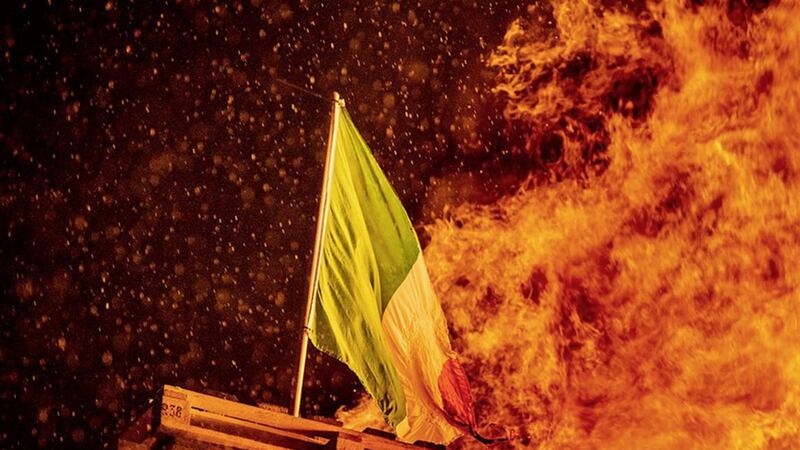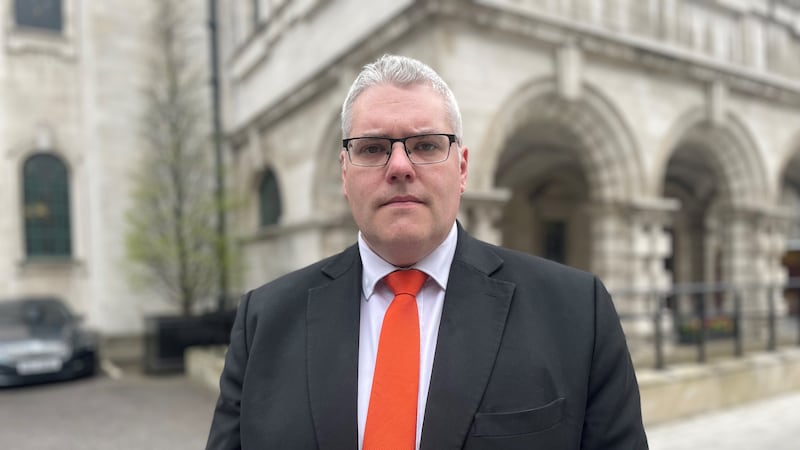THE DUP blocking the FICT (Flags, Identity, Culture & Tradition) report was another lost opportunity for unionism. Instead, typically, political unionists saw it as a threat.
The coverage of the DUP veto on FICT has emphasised the cost of the binned report – £800,000 – and how it illustrates the dysfunction of Stormont. All that’s deplorably true, but the real significance of the failure is more important.
Unionists passed up what is probably their last chance to place the more egregious excrescences of what some of them call their ‘culture’ on an official footing recognised by the rest of people here.
One DUP stalwart repeated the false canard that “Sinn Féin wants to eliminate all traces of Britishness from the north”. Not true, and the DUP know it. SF wants to place unionist symbols, emblems and regalia on an equal footing alongside Irish symbols, emblems and regalia. The DUP refuse to countenance that. They’d rather have nothing than accept any manifestation of Irishness.
Yet unionism’s version of what they ridiculously call ‘British culture’: flags, bonfires, marching bands etc is alien to British people.
In his book The Importance of Elsewhere (note the ‘elsewhere’), Richard Bradford describes the impression the ‘Twalf’ made on Philip Larkin, arguably the best English poet of the late twentieth century.
Larkin wrote to his muse Monica Jones about “Orange Day or whatever they call it”. As Bradford commented, Larkin’s observations “read rather like the diary of an Edwardian anthropologist, who is at once dumbfounded and fascinated by tribal rituals previously unimaginable”.
Larkin wrote that the ‘Twalf’ reminded him of “a parade of the 70,000 Deadly Sins… for you have no idea how long it was. The dominant impression from the endless tramping file of faces was of really-depressing ugliness. Slack, sloppy, sly, drivelling, daft, narrow, knobby, vacant, vicious, vulpine, vulturous – every kind of ugliness was represented not once but tenfold – bonfires at every corner blazing up house-high.”
Larkin couldn’t recognise in it any feature of British culture because of course none of it has anything to do with British culture. It’s an entirely indigenous unionist concoction, the last grotesque displays of a poisonous potion of the triumphalism and supremacy that lies at the core of unionism.
It’s an essential element because unionism was invented as a stratagem to avoid living on equal terms with the rest of the people on this island. It has no other function. Publicly displaying your superiority and ramming it down the throats of fenians anywhere you chose was therefore de rigueur.
That’s all over now. Unionism has run out of road. Nationalists are the majority in four and a half of the six counties. Belfast is no longer a unionist city. Failure to reach an accommodation with nationalists has meant the gradual but inexorable reining in by law of unionists’ provocative and lawless behaviour which their craven leaders tacitly endorse.
There’s a way to go yet, but the direction of travel is one way only. Already the most outrageous and potentially life-threatening displays only happen within loyalist enclaves. The towering infernos are pitiable exhibitions of weakness, unionist cris de coeur; what Matthew Arnold called in another context, “its melancholy, long, withdrawing roar”.
Failure to reach an accommodation in the FICT report is another example of the weakness and failure of unionist political leaders. It is all too predictable.
Given the chance to reach a deal and have their symbols and regalia and displays formally recognised within official constraints, they’d rather hand the initiative to loyalist yahoos to intimidate local people and endanger their own neighbourhoods.
As you’ve read here before, the logical consequence of this refusal to treat on equal terms with nationalist representatives means that ultimately, the remnant wishing to flaunt their defunct triumphalism will be reduced to a folk museum on the Copeland islands; a 1,000 foot tower block festooned with flegs entered through an Orange arch guarded by a Lambeg drummer.








